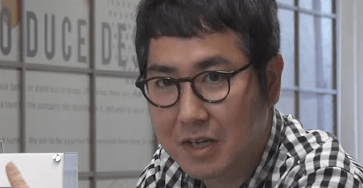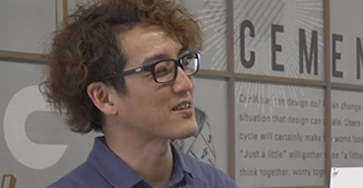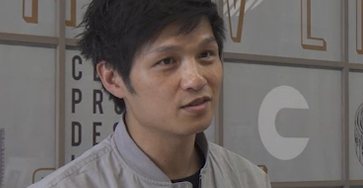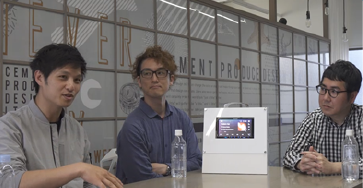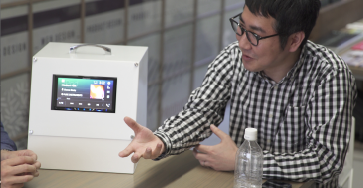INTERVIEW 01
The design goals
for the new AV receiver
INTERVIEW 02
The process of connecting
the UX and UI with the final design
INTERVIEW 03
Connecting with the market
and the end-users
INTERVIEW 04
The future of animation
and UX design
INTERVIEW 05
Pioneer's commitment
to function and form with
the new AV series receivers
The design goals
for the new AV receiver
Q: To start things off, could you tell us briefly about yourselves and what you do?
Kakimoto:
I work for Pioneer designing the user interfaces for our car audio and navigation systems. I'm also involved in the development of our smartphone applications.
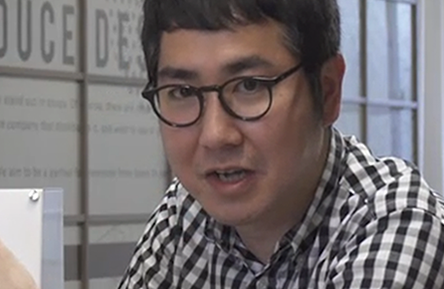
GUI designer
Pioneer corporation
Akimasa Kakimoto
Akimasa Kakimoto is in charge of GUI for car electronics products and DJ products, and is the GUI design leader for the new AV receiver.
Akatsu:
I'm a manga creator. I started out drawing manga, but lately I have also been pursuing a career in illustration. These days I do a lot of freelance character and mecha design work depending on what is needed. For the new AV receiver, I did the design of the car in the promotional animation.
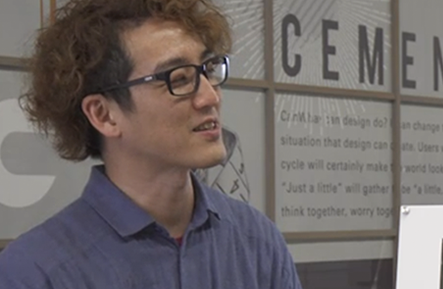
Mechanic designer of
promotion animation
Yutaka Akatsu
Yutaka Akatsu debuted as a cartoonist, and his illustrations and characters have been enjoyed all around the world. He is in charge of mechanical design for animation in this project.
Roy:
I am the Creative Director of a company called Rival Schools. 10 years ago, I was one of three founders that started the company in Vancouver to offer UX (user experience) and Content Design services, and 2 years ago we expanded that operation into Japan.
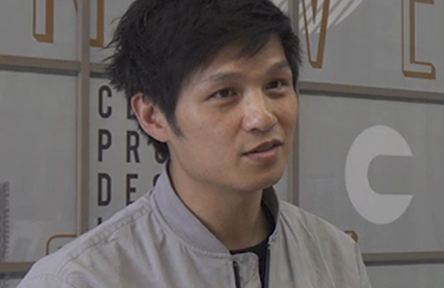
UX designer
Rival Schools
Roy Husada
Roy Husada is a highly experienced design professional with over 15 years of leadership. He also provides consulting services for some of the world's most well-known brands of digital products.
Q: What has been your experience since coming to Japan?
Roy:
Living in Japan has certainly deepened my understanding of the Japanese culture and language. I feel like part of me is still a foreigner looking at Japan from the outside. The interactions between the dual-perspectives are what I find fascinating.
Q: Why did you get into UX design?
Roy:
I started out working in digital design. At the time, Flash was just starting to become popular, so I became quite good at creating applications and websites using Flash. I've spent the biggest chunk of my career so far working in digital design. Though recently I've also been building my skills in product design and tool development for enterprises.
Q: So, let's talk about the new AV receiver. For starters, could you please tell us about some of the product's special features?
Kakimoto:
This is the new AV receiver's home screen. One of the new model's special features is that users can customize the home screen however they like. For example, if you only use the Radio, iPod, and DVD functions, you can customize the screen to make it just those three buttons. Depending on how the user wants to use the product, they can transform the home screen as you like.
Q: How did you go about creating a design that's easy and safe to use while driving?
Kakimoto:
It's about making sure that the buttons are easy to press and that operations can be performed with a minimal number of presses. Your finger should only have to move a short distance for each button press. Users are able to place the buttons on the screen wherever is convenient for them and that is the best way to ensure both safety and ease of use. Typically, it can be hard to press the right button while you're driving.
Q: So first and foremost, you want it to be easy to use for drivers.
Kakimoto:
That's right. Actually, that same desire to make an easy-to-use product is also why we placed the buttons on the four sides of the LCD screen. Different users have different ways of pressing buttons and different parts of the screen they like to press. What's more, where the product is mounted will vary from car to car and that's why I wanted the button locations to be adjustable, to fit the needs of every driver regardless of vehicle.
Q: So you've given users that freedom - for ease and convenience.
Kakimoto:
Exactly. On the other hand, if you give users too many options, they're going to worry about how to make their setup just perfect. That's what led me to think up this unique and interesting way to customize the screen. You can touch and then drag your finger across the screen to change the areas where icons are located, and the areas with no icons become a sort of "free space" where you can express your individual preferences. So, you can adjust what parts of the wallpaper are showing or find other ways to enjoy this freedom by switching the layout from time to time.
Q: You're balancing the addition of new ideas while keeping everything easy and intuitive.
Akatsu:
When designing a manga or anime, there's basically no such thing as "addition by subtraction". You almost never end up removing a cool idea just to preserve the overall balance. In fact, you want to cram in an almost excessive amount of ideas to make your work the best it can be. That's the approach I've always taken to get people to look at, get into, and really understand my work. In some respects, it's the same idea as an attraction at an amusement park. I mean, what makes a roller coaster exciting is the contrast between the slow and fast parts of the ride.
Kakimoto:
Yes, exactly.
Akatsu:
If you're going to build a roller coaster, you may as well build it chock full of the thrills and spills that make roller coasters great. When making a manga or an anime, once you decide on the concept that serves as your starting point, you want to keep adding as many interesting details and twists to it as possible.
Kakimoto:
The idea is to get people to dive headlong into the world you've created. To apply this line of thinking to UXs and UIs, interfaces are like attractions too. But good attractions aren't simply presented and then forgotten. A good attraction leaves you with the memory of enjoying it, and the sense that you've grown a little bit once the experience is over. In the same way, I think high quality design work doesn't just end with the output of a finished product.
Akatsu:
Manga and anime are entertainment; they're designed to be an escape from daily life. UX and UI on the other hand, should fit more intuitively within people's lives. That's what sets UX and UI apart from the fantasy of manga and anime, and also what makes them appealing.
to be continued Vol.2
